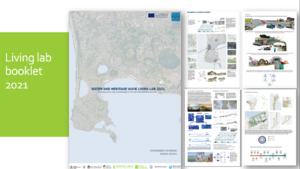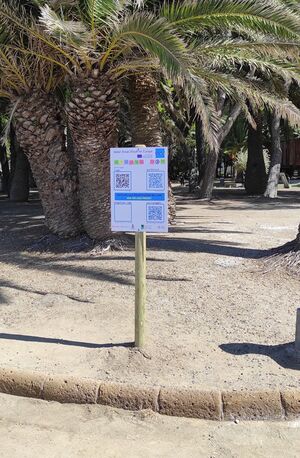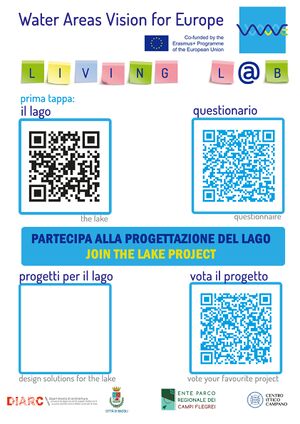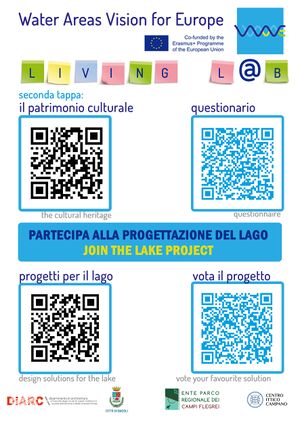WAVE Living Lab in Phlegraean Fields, Italy
The Phlegraean Fields WAVE Living Lab
{{#evu: https://vimeo.com/686320290%7Calignment=inline |dimensions=300 |description= video prepared by the FEDERICO II WAVE project team }}
The Phlegraean Fields’ Living Lab aims to establish a methodology for the coastal area and the water element, from an environmental, economic, social and design perspective. It will analyse significant aspects of the Bacoli area. Water will be declined as a relevant element for the culture, sociality and health of the community and for urban morphology. Landscape is linked to the productive-economic development of the study area and to the theme of thermalism. The archaeological heritage is the background of territorial and urban dynamics: Bacoli is a true urban museum, a characteristic with crucial implications.
The area of Campi Flegrei is included in the municipalities of Bacoli, Monte di Procida, Pozzuoli, Quarto, Giugliano in Campania and Naples. In particular, the first three municipalities mentioned, which occupy the so-called Phlegrean peninsula, are almost completely Phlegrean. The area has been known since ancient times for its lively volcanic activity and is considered a great caldera in a state of quiescence, with a diameter of 12-15 km. The Phlegraean Fields have an enormous historical importance, landscape and territorial for numerous reasons that have made from the seventeenth century to the XIX century this part of Campania destination of the Grand Tour, attracting visitors from all over Europe. Among these Goethe in his Journey in Italy gives an ample description.
The archaeological remains, subjected to intense excavation campaigns since 1941, revealed a stratification of constructions, villas and thermal complexes, belonging to the republican age, augustan age, adrianea and severe. Among the most significant remains are the temple of Diana, Mercury and the temple of Venus. These are thermal structures, not places of worship, which has remained the popular name. Water has always been the central focus of the Phlegraean Fields in antiquity, thanks to the presence of cisterns, aqueducts, thermal baths and nymphaea, where sacred rituals related to water were celebrated. For this reason reason, the Phlegraean Fields have Since the middle of the eighteenth century, the greatest intellectuals coming from all over Europe came to Campania with the grand tour. During the tour, the young intellectuals learned about to know politics, culture, art and antiquities of European countries. There are in fact tens of thousands of works of art scattered all over the world depicting places like Baia, Pozzuoli, Cumae and all the rest of the phlegraean fields. Italy with its legacy of ancient Rome, became one of the most popular places to visit. During the trip, young people could visit the ruins of Rome, but also of Pompeii and Ercolano, which had recently been discovered. Among the most important stops on the tour, there was a visit to Naples and the Phlegraean fields that offered the possibility to visit archaeological sites and natural phenomena, such as volcanic activity, as Goete says. volcanic activity, as recounted by Goete in Viaggio in Italia.
The Phlegraean Fields area is nowadays a singular weave of urbanized areas, impressive archaeological finds and fascinating landscape peculiarities, with a close, and sometimes inseparable, connection between archaeological sites and modern buildings.
In 2003, in implementation of the Regional Law of Campania n. 33 of 1.9.1993, has been established the Regional Park of Campi Flegrei. Areas of important biological and natural value are Cape Miseno, the Submerged Park of Baia, Monte Nuovo and the Crater of Astroni.
The Phlegraean Fields WAVE Living Lab has the following objectives:
- Generate knowledge about the local water areas, their system context, challenges and opportuntities
- To address these topics in project-based learning settings offered by Federico II University
- To include local stakeholders and citizens in this knowledge creation process
- To generate and communicate alternative futures for the water landscapes
These issues are part of the Masterplan of the Domitio-Flegreo Coast (2019) which recognizes the importance of actions for landscape redevelopment, accessibility and enhancement of the Phlegraean heritage with cycle and pedestrian redevelopment. Many NGOs, institutional bodies and citizens are involved in the Phlegraean Fields’ Living Lab together with students from Federico II University who produced some design solutions to specific points of the landscape.
Booklet from Phlegraean Living lab 2021 (download)
Phlegraean Living lab 2022
BEFORE THE INTENSIVE STUDY PROGRAM
After the elimination of anti covid distancing measures, the Phlaegraean LIving Lab entered a second phase of work and activities, in preparation for the intensive Studi program planned for September 2022 in Bacoli, thus having the previously identified Lake Fusaro as a case study. However, the experience of the covid period, which had forced all activities to become digital, pushed us to think about how to keep using some digital participatory tools that we learned during the pandemic period.
The wide diffusion among the population of all ages and cultural levels of QR codes as direct links to easily accessible digital content allowed us to design a methodology for population's surveying and listening , a digital living lab in which any user, even a non-expert, could leave an opinion, an instance, an idea or simply a desire for the transformation of the places in which they found themselves.
We decided to design some interactive boards that could link, by means of QR codes, to:
1) Historical brief information about landscape and cultural heritage; the Fusaro lake (video) The cultural heritage along the lake shore (video) The Roman beach and the Quarantena's park
2) Digital questionnaire (Google form), to be easly filled in by using personal mobile phones; link to the Google form
3) Design solution to trigger further ideas;
4) An evaluation form for local population to survey the impact of the proposed design solutions.
DURING THE INTENSIVE STUDY PROGRAM
We installed three interactive boards along the Fusaro lake shore during the Intensive study program, on september 2022, and students used them to better understand the peculiar connection berween landscape and cultural heritage in the Phlaegraean fields, but also to survey questionnaires and opinions from local popolation invited to interact with the boards.
,
AFTER THE INTENSIVE STUDY PROGRAM
During the ISP held in Bacoli from Sept. 18-23, 2022, students were hosted in the historic Casina Vanvitelliana building and developed design solutions based on the participatory living lab approach. The projects were synthesized into short videos of simple and immediate communication, and a fourth QR code was prepared for them that completed the missing box of the panels previously installed along the shores of the lake. This enabled local people and tourists to view the elaborated solutions and give feedback through a simple vote, which was also possible by means of a google form linked to the fourth QR code printed of the interactive boards.
Design solutions video






